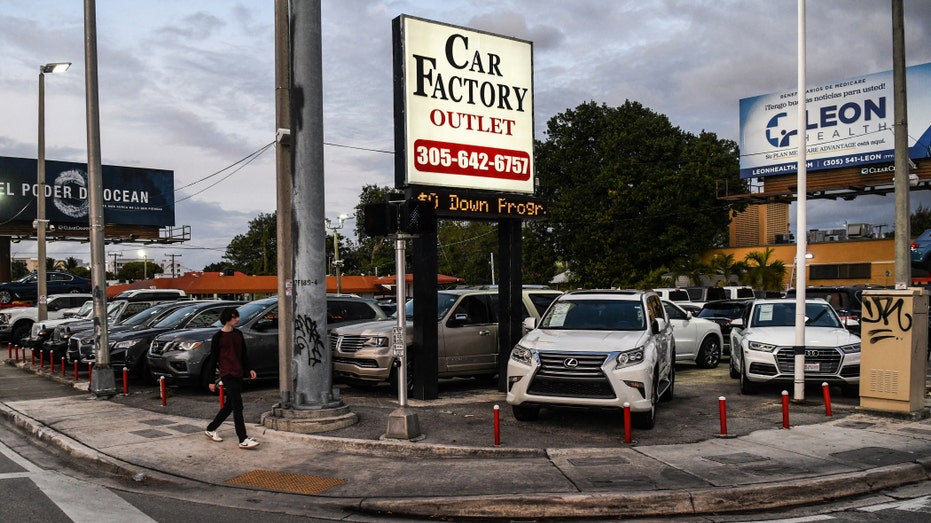Inflation rose 3.2% in July as prices tick higher for first time in a year
Inflation sees uptick in July amid increase in gas, food prices
We aren't 'out of the woods yet' with inflation: Luke Lloyd
Strategic Wealth Partners investment strategist Luke Lloyd on what to expect from the July PPI and discusses 2Q earnings.
Inflation ticked higher in July, snapping a yearlong streak of steady declines in prices as consumers continued to grapple with the rising cost of everyday goods.
The Labor Department said Thursday that the consumer price index, a broad measure of the price for everyday goods including gasoline, groceries and rents, rose 0.2% in July from the previous month, in line with estimates.
Prices climbed 3.2% from the same time last year, up from 3% in June but slightly below the 3.3% forecast from Refinitiv economists. It marked the first acceleration in the headline figure in more than a year, underscoring the challenge in taming high inflation.
"The Fed has always stressed it would take a long time to tame inflation, and today’s data illustrates their point," said Mike Loewengart, head of model portfolio construction at Morgan Stanley Global Investment Office. "The CPI didn’t show any signs of reaccelerating inflation, but it didn’t mark a dramatic dropoff, either."
CREDIT CARD DEBT RISING IN DOUBLE-EDGED SWORD FOR THE ECONOMY
Other parts of the report also pointed to a slower retreat for inflation. Core prices, which exclude the more volatile measurements of food and energy, climbed 0.2%, or 4.7% annually. Both of those figures are in line with expectations. However, core prices remain more than two times higher than the typical pre-pandemic level.
Stocks jumped after the report fueled investors' hopes that the Fed will soon conclude its tightening campaign, with all three of the major U.S. benchmarks rising.
| Ticker | Security | Last | Change | Change % |
|---|---|---|---|---|
| I:DJI | DOW JONES AVERAGES | 49077.23 | +588.64 | +1.21% |
| I:COMP | NASDAQ COMPOSITE INDEX | 23224.824614 | +270.50 | +1.18% |
| SP500 | S&P 500 | 6875.62 | +78.76 | +1.16% |
Scorching-hot inflation has created severe financial pressures for most U.S. households, which are forced to pay more for everyday necessities like food and rent. The burden is disproportionately borne by low-income Americans, whose already-stretched paychecks are heavily affected by price fluctuations.
Consumers continued to see some reprieve in July. The price of used cars and trucks tumbled 1.3% over the month and are down 5.6% compared with the same time one year ago. Airline tickets also plummeted 8.1% in July, following declines in both April, May and June.
MOODY'S DOWNGRADES US BANKS, WARNS OF POSSIBLE CUTS TO MAJOR LENDERS
Other price gains proved persistent and stubbornly high in June. Shelter costs, which account for about 40% of the core inflation increase, rose 0.4% for the month and are up 7.7% over the past year. The Labor Department attributed 90% of the inflation spike last month to the increase in shelter costs.

The price of used cars and trucks tumbled 1.3% over July and are down 5.6% compared with the same time one year ago. (Chandan Khanna/AFP via / Getty Images)
Energy prices also increased 0.1% last month, including a 0.2% uptick in gasoline costs. Gas prices are down about 19.9% compared with the same time last year, when the average cost for a gallon of regular was running around $4.01.
Food prices, a visceral reminder of inflation for many Americans, also inched higher in July. Grocery costs rose 0.3% last month and are up 3.6% compared with the same time last year.
The data indicates that while inflation has fallen from a peak of 9.1%, it remains well above the Fed's 2% target, despite an aggressive interest-rate hike campaign. The U.S. central bank has approved 11 rate hikes over the course of 16 months, lifting the federal funds rate to the highest level since 2001.
Still, policymakers are widely expected to skip an interest rate increase at their next meeting in mid-September, despite the latest uptick in inflation.
A FED PAUSE LIKELY WON’T HELP STRUGGLING CONSUMERS

The U.S. central bank has approved 11 rate hikes over the course of 16 months, lifting the federal funds rate to the highest level since 2001. (Kevin Dietsch / Getty Images)
CLICK HERE TO READ MORE ON FOX BUSINESS
"The case is building for the Fed to keep policy rates unchanged in September. Both headline and core inflation are waning and the internals of the CPI print suggest that further deceleration pressures should build over the coming months," said Seema Shah, chief global strategist at Principal Asset Management.
But she also noted that interest rates are likely to remain high for some time. The probability of another rate hike next month is just 13.5%, according to data from the CME Group's FedWatch tool, which tracks trading.
"While inflation is moving in the right direction, the still-elevated level suggests that the Fed is some distance from cutting rates," she said. "Indeed, disinflation is unlikely to be smooth and will require some additional economic pain before the 2% target comes sustainably into view."





















